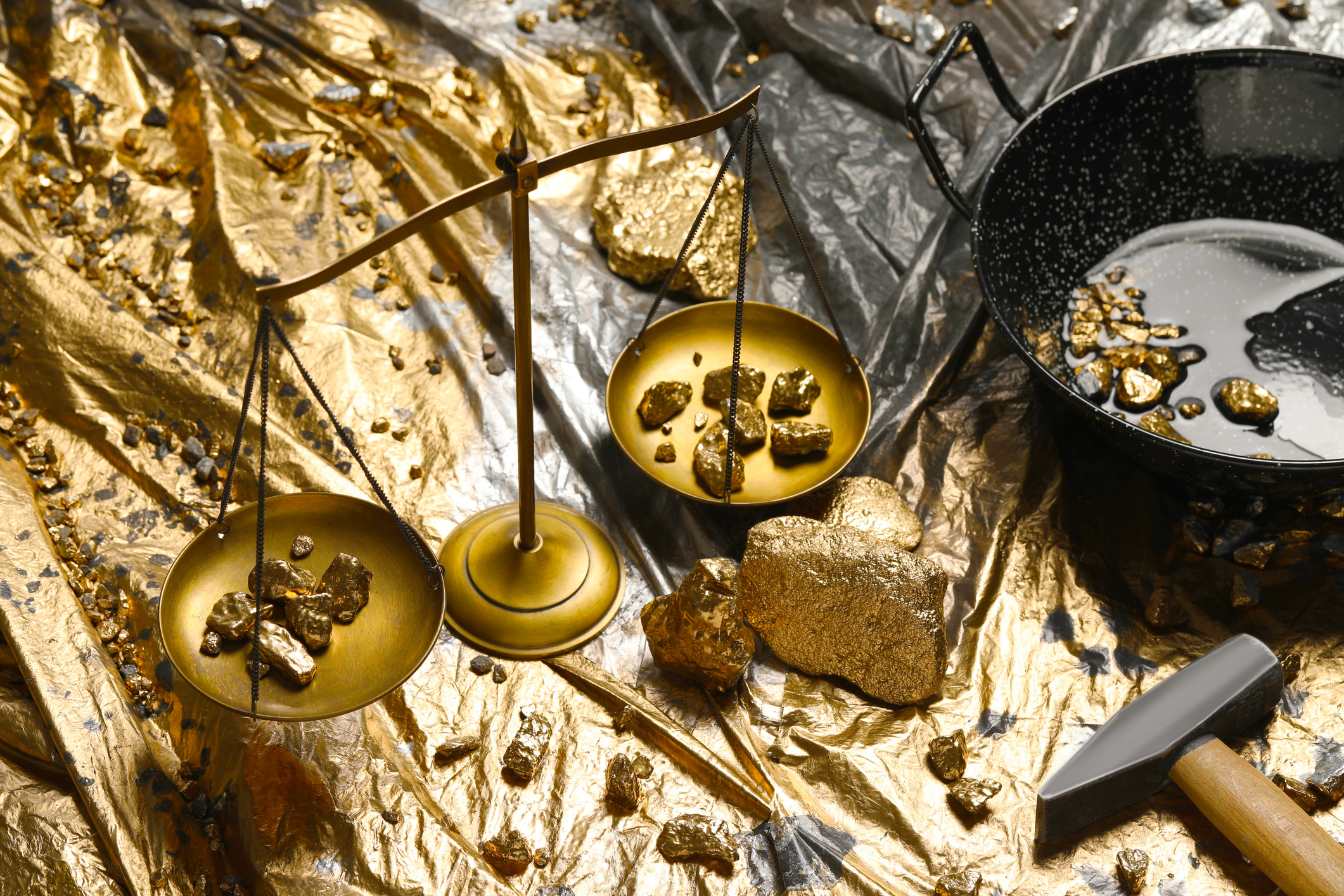Scientists turn lead into gold – could it wreck the yellow metal's price?
Medieval alchemists have been vindicated after scientists turned lead into gold, but the results aren’t going to crash the gold price any time soon


Gold has always held economic value because of several qualities.
It is inert, which means it doesn’t decay (or irritate your skin if you wear it as jewellery). It is relatively soft, so it can easily be made into small units that can be exchanged.
But the quality that has made humans throughout history want to invest in gold is the fact that it is rare.
MoneyWeek
Subscribe to MoneyWeek today and get your first six magazine issues absolutely FREE

Sign up to Money Morning
Don't miss the latest investment and personal finances news, market analysis, plus money-saving tips with our free twice-daily newsletter
Don't miss the latest investment and personal finances news, market analysis, plus money-saving tips with our free twice-daily newsletter
There is a finite amount of gold in the world. The World Gold Council estimates that around 216,265 tonnes have been mined in all human history, and that if all that was condensed into a single cube it would be roughly 22 metres long on each side.
Of course, there is more gold underground that could be mined, but the supply is finite. Or is it?
Scientists at ALICE – standing for A Large Ion Converter Experiment, which operates at CERN’s Large Hadron Collider (LHC) – published research earlier in May that quantified the conversion of lead atoms into gold.
Only 29 picograms of gold were produced – an almost unimaginably small quantity, “trillions of times less than would be required to make a piece of jewellery”, according to CERN. They also only existed for nanoseconds, before fragmenting into their constituent sub-atomic particles.
But, in essence, the ALICE team has achieved the stated goal of medieval alchemists: the conversion of base metals (particularly lead) into gold.
“At the current stage, it’s very economically unappealing, and not scaleable,” Hakan Kaya, senior portfolio manager at Neuberger Berman, tells MoneyWeek. “But at the end of the day, a lot of things, when you look at the history of economics or especially of commodities, that were considered uneconomical have over time become economical.”
What would turning lead into gold mean for gold prices?
The LHC is an eye-wateringly expensive piece of equipment. It took a decade and cost $4.75 billion just to build, and the cost of running experiments there runs to around $5.5 billion annually.
Its gold output, to date, is less than a trillionth of a gold ring that existed for less than a second.
So the breakthrough, while eye-catching, is not about to disrupt the gold investment case in its own right. The chances of it being scalable to any practical degree are miniscule, and it would likely take decades to develop the technology sufficiently if so.
But suppose for a moment that it was possible to scale this technology, and convert lead directly into gold.
“In that hypothetical, low-probability state of the world, there would be an impact on gold prices,” says Kaya. “Gold would be likely to be more abundant, and its scarcity value to a certain extent gets destroyed.”
He compares this to diamonds. When artificial diamonds became available, they dented diamond prices.
They didn’t completely kill them, though, and outside of industrial use cases (where artificial diamonds are often more effective than natural ones), Kaya points out that there is still something of a premium on “real” diamonds. The same might be true if gold were ever manufactured at scale.
The gold produced by ALICE was an isotope of gold, meaning it has a slightly different chemical composition to the gold that occurs naturally. While that may or may not affect its chemical properties, it would make it distinguishable from natural gold, and as such enable a premium on naturally-occurring gold.
“I would still think gold would continue to function as a store of value, even in that kind of environment,” says Kaya.
Alchemy and collectible gold
The thought experiment has all sorts of interesting connotations. Kaya suggests that “real” gold could become something of a collector’s item.
“There can be gazillions of Mona Lisa paintings out there, but it doesn’t reduce the value of the original. That cannot be replicated,” he says.
Similarly, if gold were ever produced from lead at scale, then perhaps items made from lead from before this was possible – such as gold bullion, or especially collectible gold coins – could take on even more lustre, standing out as relics in time from a bygone era.
“It may even increase the value that people ascribe to real, authentic gold,” says Kaya.
Massive technological advances would be needed in order for any of this to become more than conjecture. Kaya believes that there would be undoubted interest among the less risk-averse in investing into that research, at least in the longer-term.
In the here and now, though, there may be cheaper, more realistic means of increasing the gold supply.
“If you’re a gold miner, then maybe you just go out and explore mining gold from asteroids,” he says. “That’s probably within closer reach, and more economical [at this stage].”
Get the latest financial news, insights and expert analysis from our award-winning MoneyWeek team, to help you understand what really matters when it comes to your finances.

Dan is a financial journalist who, prior to joining MoneyWeek, spent five years writing for OPTO, an investment magazine focused on growth and technology stocks, ETFs and thematic investing.
Before becoming a writer, Dan spent six years working in talent acquisition in the tech sector, including for credit scoring start-up ClearScore where he first developed an interest in personal finance.
Dan studied Social Anthropology and Management at Sidney Sussex College and the Judge Business School, Cambridge University. Outside finance, he also enjoys travel writing, and has edited two published travel books.
-
 Boost for over 100,000 families on Child Benefit as new HMRC payment system rolled out
Boost for over 100,000 families on Child Benefit as new HMRC payment system rolled outThousands of households will no longer have to pay the dreaded High Income Child Benefit Charge through self-assessment
-
 Are you being haunted by the ghost of Christmas past? How festive cutbacks could boost your long-term wealth
Are you being haunted by the ghost of Christmas past? How festive cutbacks could boost your long-term wealthThe average family spends around £1,000 over the Christmas season. Here’s how much you could have gained if you had invested some of the money instead.